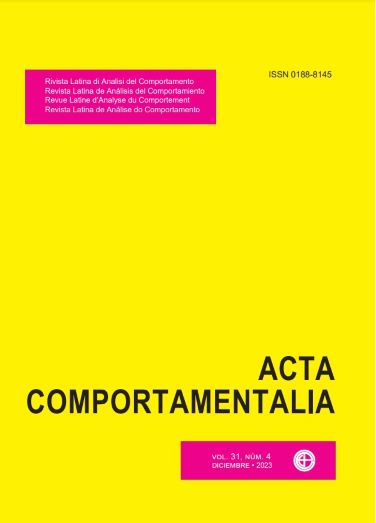Implementação de ensino incidental via profissionais e cuidadores a crianças autistas
Contenido principal del artículo
Resumen
A Análise do Comportamento Aplicada é considerada uma ciência eficaz, sólida e promissora para o tratamento de crianças com diagnóstico de Transtorno do Espectro Autista (TEA). Dentre as possibilidades de intervenção para esse público, o ensino incidental apresenta-se como uma estratégia promissora, mas ainda são escassos os estudos sobre essa modalidade de intervenção. Diante desse cenário, o objetivo deste estudo foi avaliar a implementação de ensino incidental, por profissionais e cuidadores, para o ensino do operante verbal mando a crianças diagnosticadas com TEA. Utilizou-se um delineamento experimental de linha de base múltipla entre participantes para avaliar a relação funcional entre a implementação de programas de ensino pelos aplicadores, no mínimo de três vezes por semana, e a aquisição das habilidades pelas crianças. Ambos os agentes de intervenção, profissionais e cuidadores, foram capazes de ensinar habilidades de mando para crianças com TEA via ensino incidental. Na intervenção realizada por profissionais, foi necessária uma média de 5,2 sessões para alcançar critério de aprendizagem, e na intervenção realizada por cuidadores, foram necessárias uma média de 8,5 sessões. Em contrapartida, os cuidadores implementaram menos tentativas de ensino. Portanto, ambos os tipos de intervenção apresentam eficácia e eficiência no treino de habilidades.
Detalles del artículo
Citas en Dimensions Service

<a rel="license" href="http://creativecommons.org/licenses/by-nc-sa/4.0/"><img alt="Licencia de Creative Commons" style="border-width:0" src="https://i.creativecommons.org/l/by-nc-sa/4.0/88x31.png" /></a><br />Este obra está bajo una <a rel="license" href="http://creativecommons.org/licenses/by-nc-sa/4.0/">licencia de Creative Commons Reconocimiento-NoComercial-CompartirIgual 4.0 Internacional</a>.
